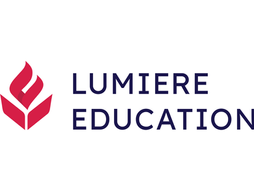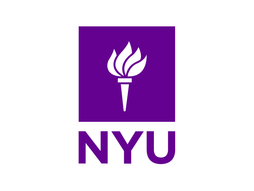The Ultimate Guide to the Genes In Space Challenge
Competing in science competitions can help you when you apply to selective universities. Competitions also grant the opportunity to improve one’s skills in writing, public speaking, or debate, for example.
In this blog, we’ll share an opportunity to expand your biomedical interests through the Genes In Space Challenge, a virtual competition where winners can present their research at the ISS Research and Development Conference in Seattle, Washington! We’ll cover the key details, such as eligibility, and location, as well as some pros and cons regarding the program.
What is Genes in Space?
The Genes in Space Competition invites students to design a DNA experiment that addresses challenges in space travel and deep space exploration. The proposed experiment must utilize at least one tool in the Genes in Space toolkit, such as fluorescence viewers or a PCR machine. After designing an experiment, students are to present their findings as a proposal for why their hypothesis is a beneficial addition to the work of the International Space Station. The submissions are judged on creative and scientific merit.
Am I eligible for the Genes In Space Challenge?
Genes in Space is a relatively inclusive program in terms of eligibility but is selective. Genes in Space is open to all 7th-12th grade students. There are no GPA requirements nor any specific academic requirements, meaning that all students can apply for this opportunity. However, the competition is only open to students in the United States.
Is the Genes in Space Conference prestigious?
Despite its relatively flexible eligibility requirements, the Genes in Space Competition is an extremely selective one. There are hundreds of submissions received for only a limited number of finalist spots each year. The opportunity to present research as a high schooler to the ISS is a highly rare and prestigious one. Furthermore, the annual competition is sponsored in collaboration with universities like Harvard and MIT, as well as companies like Boeing, New England Biolabs, and Math for America, deeming it a prestigious STEM competition.
How do I apply?
Students can work alone or in a paired team of up to 2 students. After choosing a topic that is of interest to them, students must define a hypothesis, choose a creative approach, and present their case for why the ISS is a facility that could carry out this experiment. Submissions are due in April and decisions of finalists and semifinalists are made in May. If students are selected as finalists, they will be mentored throughout June and July before the conference in late summer.
Specifically, the challenge encourages students to design a DNA experiment that addresses challenges in space travel and deep space exploration. In 2023, the winning participant, Isabel Jiang, crafted a project detecting and treatment of LINE1 Retrotransposon activation in space. The committee is looking for innovative and creative solutions to address their challenge.
What are the advantages of participating?
There are many advantages to participating in this competition! Many awards are available for creativity and feasibility in addition to the selected prize winner.
As a finalist, you’d also receive mentorship from Harvard and MIT scientists on your work! Alumni of the competition and previous winners also serve as valuable mentors to students competing each year. Alumni have gone on to complete PhDs at Harvard and MIT while continuing their work with NASA and the International Space Station.
You’ll have the opportunity to present your research at the ISS Research and Development Conference in Seattle! To present your work at a conference of this caliber while in high school is an impressive feat that is sure to impress colleges.
The winning DNA experiment will be launched and sent to the International Space Station! Both of these can lead to the publication of one’s research in an esteemed journal!
Here are 6 Tips for Students Looking to Win the Genes in Space Competition:
Use the learning tools provided in the Genes in Space approach in order to choose the approach in the toolkit.
Find a mentor to help advise you through your project! Professors at universities across the competition are interested in supporting students. Check out this article to see just one example of a successful mentorship partnership from at Penn State.
Start planning early! Don’t wait until the last minute to finalize a project. Starting ahead of time allows you to get more feedback and subsequently, improve your project.
Be creative in your approach! Beyond the overall winning prize, the competition awards many prizes for creativity, so try to think of solutions that diverge from existing ones.
Read information about previous Finalists and winners in order to get inspiration from past successful projects! Check out the “Finalists” tab on the Genes in Space Blog.
Check out Finalist videos on the Genes in Space Blogs to glean insight into how to format a final presentation!
Our Verdict:
Ultimately, if you are interested in biology, science, space, and innovation, the Genes in Space competition is an excellent opportunity! Particularly if you’re a student looking to participate in more STEM competitions on a national level, this program is a low-stakes way to do that! Participation in this competition is sure to be an enriching experience while having the opportunity to win awards that will impress colleges and other admissions programs. Many past winners of the competition have gone on to graduate from prestigious universities and complete higher-level degrees, such as PhDs. Plus, this competition’s layout is very authentic in its similarity to a scientific approach to research, namely, it asks students to define a hypothesis, present their research question, and propose procedures, etc.
This challenge truly embodies the spirit of research and Scientific American has captured it in their article, “Students Get Creative When Competing to Study Genes in Space”: Here are a few excerpts from the article!
“This combination of open creative inquiry and limited resources serves as an excellent analog to the tasks that career researchers face every day.”
“Genes in Space brings kids not only into a more realistic science process, but it asks them to use technology and processes that are still used by cutting-edge researchers today.”
If you’re looking for a competitive mentored research program in subjects like data science, machine learning, political theory, biology, and chemistry, consider applying to Horizon’s Research Seminars and Labs!
This is a selective virtual research program that lets you engage in advanced research and develop a research paper on a subject of your choosing. Horizon has worked with 1000+ high school students so far and offers 600+ research specializations for you to choose from.
You can find the application link here
If you are passionate about conducting research in biology, you could also consider applying to the Lumiere Research Scholar Program, a selective online high school program for students founded with researchers at Harvard and Oxford. Last year, we had over 4000 students apply for 500 spots in the program! You can find the application form here.
Aisha is a student at Princeton University, studying Anthropology and Global Health. On campus, she is involved with student groups centered around health equity and cultural affinity. In her free time, she enjoys podcasting, learning languages, and trying new recipes.
Image Source: Genes in Space logo











Σχόλια